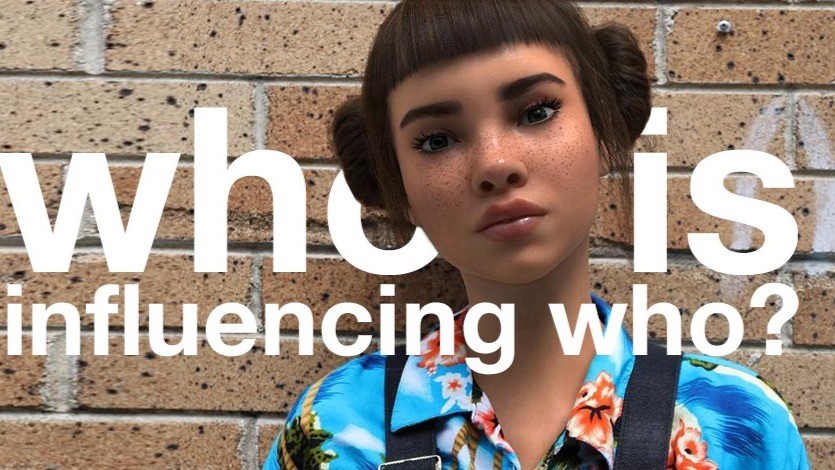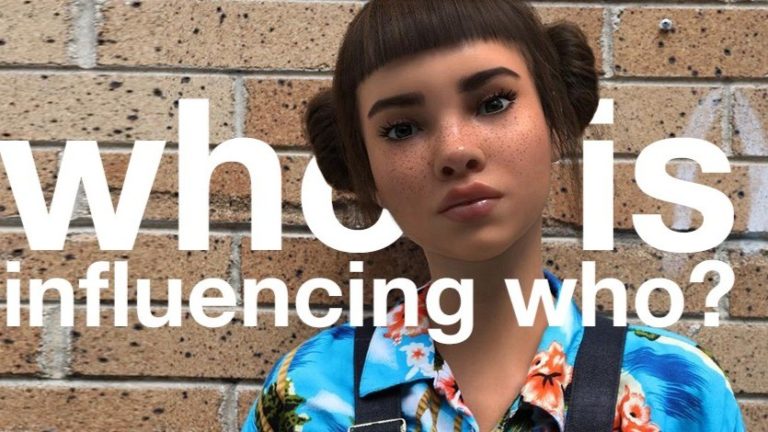The rapid evolution of digital technology has given birth to a new phenomenon in marketing: virtual AI influencers. These digital personas, crafted through artificial intelligence and 3D modeling, have taken the global social media landscape by storm, engaging audiences with lifelike appearances, personalities, and stories. But what is the potential for virtual AI-Powered influencers in Saudi Arabia, and how can brands harness their power effectively while navigating local culture and values? Here’s a look at why virtual influencers are gaining momentum globally and how Saudi brands can leverage this trend to elevate their marketing.
1. Introduction to Virtual AI-Powered Influencers and Their Global Rise
Virtual AI-Powered influencers are digital personas that live online, interact with followers, and endorse products—much like human influencers. With prominent names like Lil Miquela, Imma, Shudu Gram, Blawko, Noonoouri, Bermuda, Lu do Magalu, Theresa, Maya Gram, and Ayayi dominating global social media, these virtual AI-Powered influencers blur the lines between reality and fantasy. They offer brands precise control over messaging and eliminate concerns around personal image management that can arise with real-life influencers. As a result, global brands are increasingly embracing this innovation to capture attention, engage audiences, and build unique digital personalities that represent their values.
2. The Saudi Market’s Readiness and Appetite for AI Influencers
In a market as dynamic as Saudi Arabia, where technology and innovation are quickly reshaping consumer behavior, brands are consistently seeking new ways to stand out and capture the attention of digitally savvy audiences. One of the latest and most intriguing trends is the use of virtual AI-powered influencers, which are growing in popularity as companies explore their potential to build a unique brand presence and strengthen connections with consumers.
Saudi brands across sectors are showing a keen appetite for this technology-driven approach. As businesses in the Kingdom aim to differentiate themselves in an increasingly competitive landscape, virtual AI-Powered influencers are providing an exciting, customizable, and scalable solution that resonates with audiences and aligns with the country’s focus on digital transformation.
Saudi Arabia is uniquely positioned for the growth of virtual AI-Powered influencers due to several key factors:
- Digitally Engaged Population: With one of the highest social media penetration rates in the region, Saudi Arabia’s young, digitally active audience is open to new and exciting forms of content.
- Vision 2030’s Digital Ambitions: The Kingdom’s Vision 2030 emphasizes digital transformation, making it an ideal environment for brands to adopt cutting-edge technologies like AI influencers.
- Innovation-Hungry Brands: Saudi brands are exploring innovative strategies to differentiate themselves and capture the interest of tech-savvy consumers.
- Cultural Adaptability: Virtual AI-Powered influencers allow brands to tailor personas that align with local cultural values while also allowing for global appeal. By creating influencers who reflect traditional values or showcase modern Saudi lifestyles, brands can connect authentically with audiences across the Kingdom. This adaptability makes virtual AI-Powered influencers uniquely suited for Saudi brands looking to bridge cultural heritage with contemporary aspirations.
Saudi audiences, particularly Gen Z and Millennials, are receptive to interactive, digital-first experiences, setting a foundation for AI influencers to thrive.
3. Risks and Challenges for Saudi Brands
While virtual AI-Powered influencers present exciting possibilities, there are specific challenges and risks:
- Authenticity Concerns: Virtual AI-Powered influencers, while realistic, lack the human element that many audiences value, posing potential challenges in markets that prioritize authenticity.
- Ethical and Privacy Issues: Transparency is essential when brands introduce virtual AI-Powered influencers. Audiences need to know that they are interacting with an AI-generated persona to maintain trust.
- Investment in Technology: Creating a compelling virtual AI-Powered influencer requires significant expertise in animation, AI, and data processing, which can be costly and complex.
Saudi brands must navigate these challenges carefully to ensure successful virtual AI-Powered influencer campaigns that resonate with local audiences.
4. Case Studies and Examples of Virtual AI-Powered Influencers in Saudi Arabia
Some Saudi brands have already taken bold steps to launch virtual AI-Powered influencers and characters that reflect Saudi culture:
- Saudi Arabia’s Lamia Abdullah: The nation’s first AI-generated model. Lamia Abdullah is the epitome of Saudi beauty, with roots in Saudi culture and the use of technology in modeling.
- Noon’s Zoya: E-commerce platform Noon created Zoya, a virtual AI-Powered influencer embodying a modern Arab woman’s lifestyle. Zoya showcases fashion, beauty, and tech products, making her relatable and relevant to young Saudis.
- Saudi Telecom Company (STC)’s Sara: STC introduced Sara, a virtual AI-Powered tech advisor who helps guide customers through digital services. Sara brings a familiar and friendly face to STC’s digital platforms, adding a personalized touch to customer support.
- Tamara by Alhokair Fashion Retail: Alhokair’s digital personality, Tamara, promotes seasonal fashion collections and provides styling tips, especially appealing to fashion-forward audiences in Saudi Arabia.
- Hala by Mobily: Mobily’s Hala is a virtual AI-Powered figure focused on sharing telecom updates, digital lifestyle advice, and exclusive Mobily offers, positioning her as a digital ambassador for modern connectivity.
- Leila by Almarai: Designed by Almarai, Leila is an AI influencer who shares healthy lifestyle content, recipes, and insights into Almarai’s dairy products, targeting health-conscious families.
- Alya by Jarir Bookstore: Jarir Bookstore’s Alya promotes reading and productivity by sharing book recommendations, study tips, and information on Jarir’s electronic offerings, resonating with students and professionals.
- Sara by Saudi Tourism Authority (STA): Sara showcases the beauty of Saudi Arabia’s tourist destinations, cultural sites, and local festivals, making her a virtual tour guide for the Kingdom’s visitors.
- Reem by Arabian Oud: Representing Arabian Oud, Reem shares fragrance recommendations, insights into Arabian perfume-making, and highlights seasonal collections for Saudi consumers who appreciate luxury scents.
These cases illustrate how virtual AI-Powered influencers can represent both modernity and cultural values, creating a bridge between global trends and local authenticity.
5. Consumer Perception and Cultural Alignment
Saudi consumers are known for valuing authenticity and trust in their brand relationships. As such, brands need to consider:
- Cultural Sensitivity: Virtual AI-Powered influencers should be designed to reflect Saudi values, including modesty, respect, and cultural heritage. The appearance, tone, and personality of the virtual AI-Powered influencer should be aligned with local norms.
- Transparency: Brands should be upfront about the AI-generated nature of these influencers. Clear communication helps set realistic expectations and fosters trust, which is essential for engagement.
6. Technological Requirements and Partnerships for Virtual AI-Powered Influencers
Creating a successful virtual AI-Powered influencer in Saudi Arabia involves advanced technology and specialized skills:
- 3D Modeling and AI Integration: High-quality graphics and AI algorithms are needed to create a realistic, interactive experience. This requires 3D modeling expertise, motion graphics, and natural language processing (NLP).
- Strategic Partnerships: Saudi brands may benefit from collaborating with tech firms specializing in virtual influencer creation, especially those experienced in localizing content for the Middle East. Partnerships can help brands develop digital personas that resonate with Saudi audiences.
7. Virtual Influencers as Part of Saudi Arabia’s Vision 2030
Vision 2030 emphasizes a transition to a digitally driven economy, encouraging businesses to leverage technology to spur growth. Virtual AI-Powered influencers align with this vision by offering a fresh, digital approach to brand engagement that enhances Saudi Arabia’s positioning as a leader in innovation. Through AI-driven marketing, Saudi brands are setting an example for how technology can redefine consumer engagement.
8. Future Outlook: The Long-Term Potential of Virtual AI-Powered Influencers in Saudi Arabia
The potential for virtual AI-Powered influencers in Saudi Arabia extends far beyond brand promotion:
- Integration with Augmented Reality (AR): As AR technology grows in Saudi Arabia, virtual AI-Powered influencers can be integrated into immersive experiences that allow users to interact with brands in a more personal way.
- Multichannel Presence: Virtual AI-Powered influencers can go beyond social media to appear on e-commerce websites, mobile apps, and even in-store digital displays, creating a unified brand experience across platforms.
The flexibility of virtual AI-Powered influencers will enable brands to adapt them to changing consumer preferences and evolving digital trends in the Kingdom.
9. Recommendations for Saudi Brands Considering Virtual AI-Powered Influencers
For Saudi brands interested in exploring virtual AI-Powered influencers, here are some key recommendations:
- Start Small and Test Engagement: Launch a virtual AI-Powered influencer with a limited campaign or as a brand ambassador to gauge audience reactions and refine your approach.
- Embrace Cultural Relevance: Ensure the influencer’s persona, attire, and behavior align with Saudi cultural values to resonate deeply with local audiences.
- Focus on Transparency: Clearly communicate that the influencer is AI-powered. Transparency fosters trust and shows audiences that the brand values honesty.
- Invest in Quality Technology: A compelling virtual AI-Powered influencer requires top-tier design and AI capabilities. Partnering with specialized tech agencies can help ensure a smooth launch and a high-quality experience.
Conclusion
The rise of virtual AI-powered influencers offers an innovative path forward for brands in Saudi Arabia looking to engage audiences and differentiate themselves in a competitive market. With a young, tech-savvy population and a national focus on digital transformation, Saudi Arabia is primed for this digital shift. However, Saudi brands must balance creativity with cultural sensitivity and transparency to build trust and authenticity in their virtual AI-Powered influencers.
As brands in the Kingdom consider the next steps in their digital marketing journeys, virtual AI-Powered influencers represent an exciting, future-facing opportunity to connect, engage, and inspire audiences in new ways. By aligning with Vision 2030 and embracing cutting-edge technologies, Saudi brands can lead the way in defining the future of digital influence.





